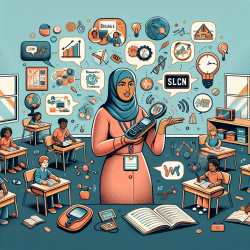Introduction
The COVID-19 pandemic has left an indelible mark on the educational landscape, particularly impacting high school students. As educators and practitioners, understanding these disruptions is crucial for fostering an environment conducive to learning and well-being. The research article "Disruptions to School and Home Life Among High School Students During the COVID-19 Pandemic — Adolescent Behaviors and Experiences Survey, United States, January–June 2021" offers valuable insights into these challenges.
Key Findings and Implications
The study highlights significant disruptions experienced by students during the pandemic, including:
- Difficulty in Completing Schoolwork: Over two-thirds of students reported increased difficulty in completing their schoolwork. This highlights the need for flexible and supportive educational strategies that accommodate diverse learning needs.
- Emotional and Physical Abuse: More than half of the students experienced emotional abuse, and about 10% reported physical abuse by a parent or adult at home. This underscores the importance of creating safe school environments and implementing robust reporting and support systems.
- Economic and Food Insecurity: A significant number of students faced economic insecurity, with 29% experiencing parental job loss and 24% experiencing hunger. Schools can play a pivotal role in addressing these issues through meal programs and partnerships with community resources.
Strategies for Practitioners
To effectively support students, practitioners can implement the following strategies:
- Enhance Support Systems: Develop comprehensive support systems that include mental health services, counseling, and peer support groups. Leveraging telemedicine can be an effective way to provide these services.
- Promote Inclusivity: Recognize and address disparities faced by students of different races, ethnicities, and sexual identities. Tailor interventions to meet the unique needs of these groups.
- Foster Resilience: Encourage resilience-building activities that empower students to cope with adversity. This can include mindfulness practices, stress management workshops, and social-emotional learning programs.
Encouraging Further Research
While the study provides a snapshot of the challenges faced by students, further research is essential to develop targeted interventions. Practitioners are encouraged to engage in ongoing research and data collection to better understand the evolving needs of students and to refine support strategies accordingly.
Conclusion
In the wake of the pandemic, educators and practitioners have a unique opportunity to reshape the educational landscape. By addressing the challenges highlighted in this research, we can create a more supportive and inclusive environment that promotes the well-being and success of all students.
To read the original research paper, please follow this link: Disruptions to School and Home Life Among High School Students During the COVID-19 Pandemic — Adolescent Behaviors and Experiences Survey, United States, January–June 2021.










